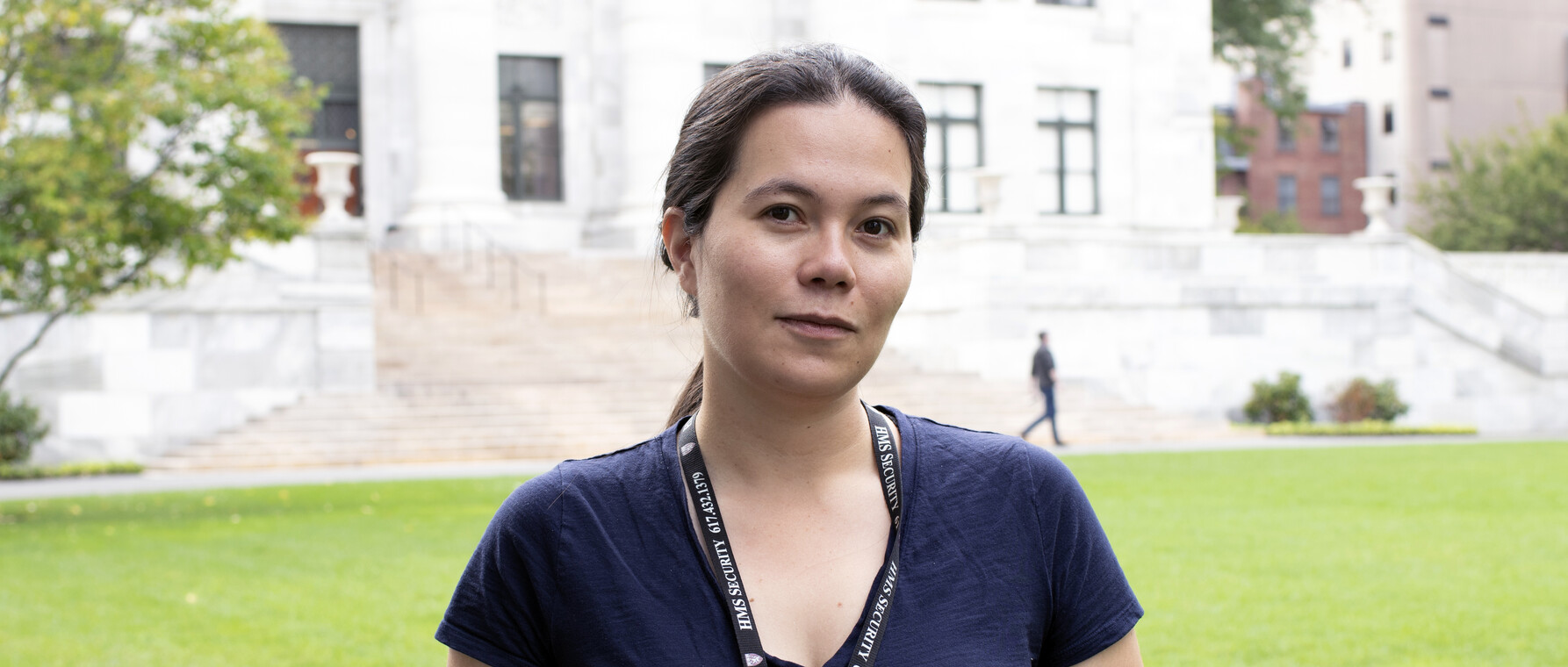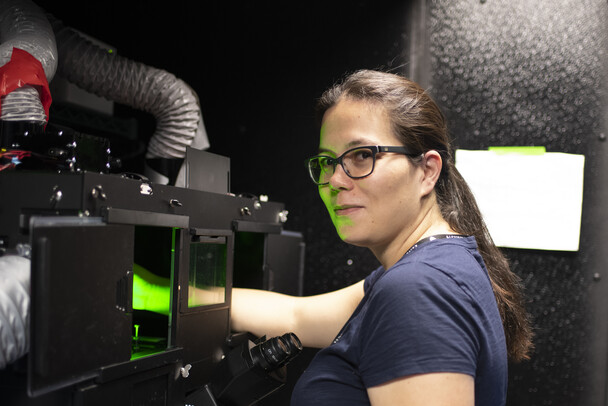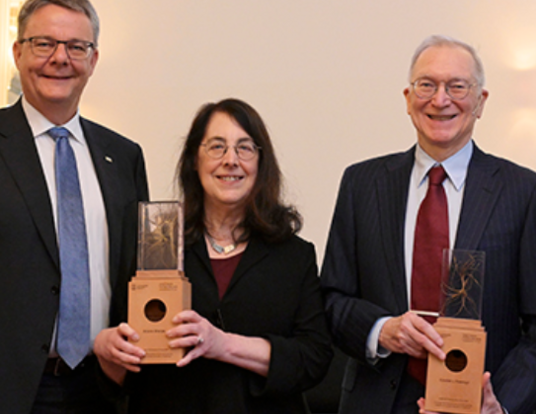The Mystery of Bacterial Persistence
How Silvia Cañas-Duarte uses systems biology to explain bacterial behavior.

Research at Risk: Since World War II, universities have worked with the federal government to create an innovation ecosystem that has yielded life-changing progress. Now much of that work may be halted as funding is withdrawn. Find out more about the threats to medical, engineering, and scientific research, as well as how Harvard is fighting to preserve this work—and the University's core values.
If you asked 100 people “What is systems biology?” you would get 100 different answers. “People often describe it using buzzwords: it’s quantitative, it’s interdisciplinary” says Silvia Cañas-Duarte, a PhD candidate in systems biology. “I see it not as an area of knowledge, but rather as a powerful approach or way of thinking about biology,” she continues. For Cañas-Duarte, systems biology integrates techniques from physics, computational sciences, and mathematics to address biological questions.
This approach-based understanding explains the diversity of research in systems biology. Cañas-Duarte belongs to Dr. Johan Paulsson’s lab, which investigates the stochasticity, or randomness, of gene expression in bacteria. Neighboring labs research everything from cancer biology to metabolism evolution in yeast. “There is so much diversity among labs, with different biological systems studied, but they are all incredibly quantitative in their approach to research,” Cañas-Duarte explains.
The Paulsson Lab’s quantitative approach involves the use of analytical tools from statistical physics and probability theory to explain the fluctuating behaviors of bacteria. “Bacteria are essentially small pockets of molecules that constantly collide with each other, leading to a lot of random behaviors,” Cañas-Duarte says.

One of Cañas-Duarte’s research projects focuses on a particularly random behavior: bacterial persistence. Not to be confused with bacterial resistance, which involves a genetic change that makes bacteria and their offspring resistant to certain antibiotics, persistence is much more complicated and enigmatic. “Here the bacterial cell doesn’t change genetically at all, but enters a state that prevents antibiotics from killing it,” Cañas-Duarte explains. However, this state is transient, meaning that the cell will become susceptible to antibiotics again. Bacterial persistence, while shrouded in mystery, appears to be widespread among bacteria and is exhibited by E. coli, which Cañas-Duarte uses in her research.
Cañas-Duarte seeks to answer fundamental questions about this poorly understood behavior. “What are the mechanisms that cause cells to enter this state? And, what even is this state?” she wonders. Answering these questions is difficult as persistence is a rare behavior, appearing only in a small number of bacteria. Cañas-Duarte must therefore use time-lapse fluorescence microscopy and microfluidic devices on approximately one million cells at a time as she tracks individual cells for hundreds of generations.
Cañas-Duarte cannot imagine herself asking these questions anywhere but at Harvard. “You are around cutting-edge research using novel techniques and concepts,” Cañas-Duarte says. “You can go to the person who invented a technique, maybe just a few blocks away from your lab, and ask them how it works.” This environment has continuously inspired Cañas-Duarte. “For the scientifically curious, it’s a great place to be,” she says. The only downside is that “you can get a little bit distracted,” she adds with a laugh.
Photos by Molly Akin
Get the Latest Updates
Join Our Newsletter
Subscribe to Colloquy Podcast
Simplecast




